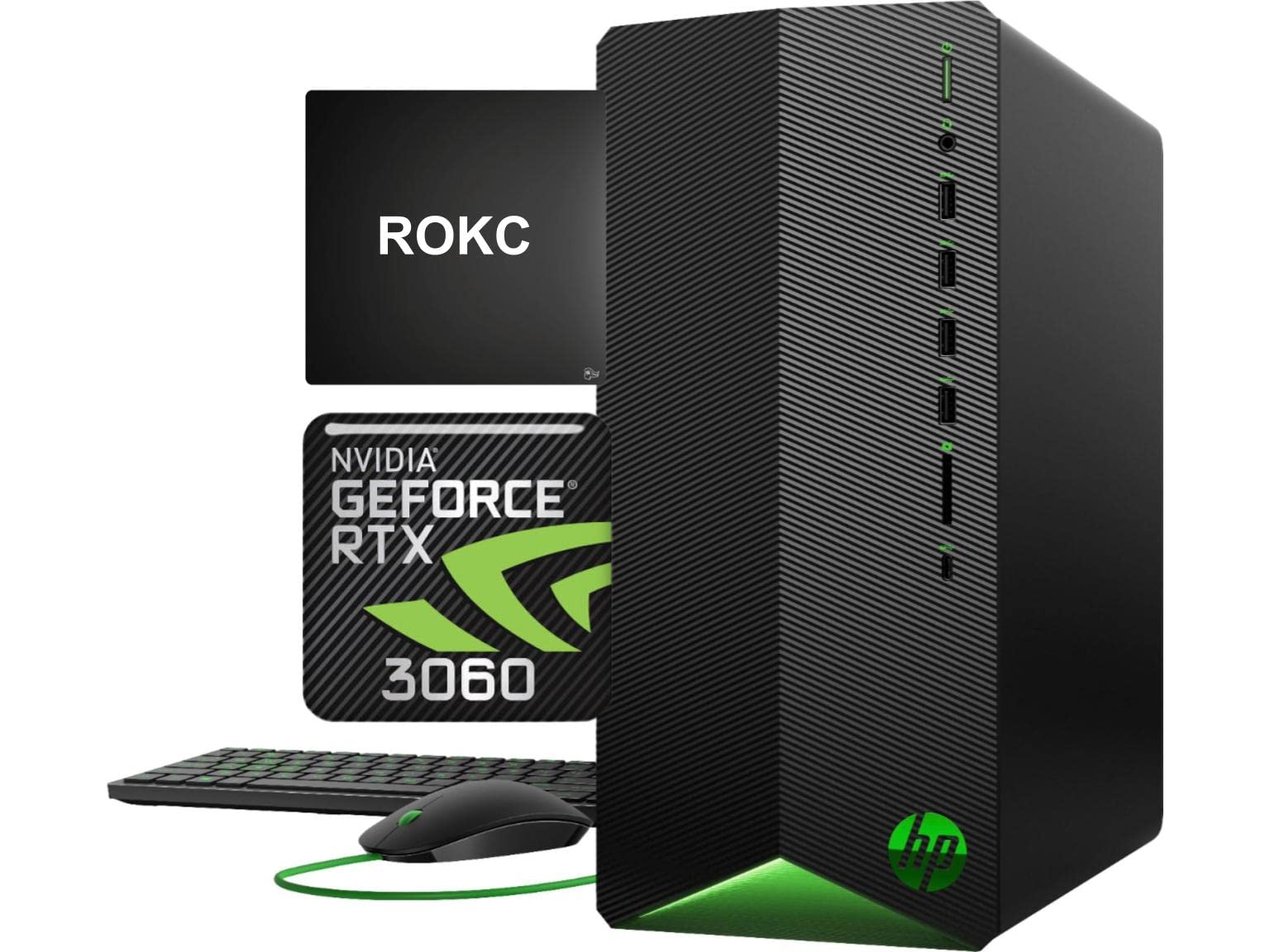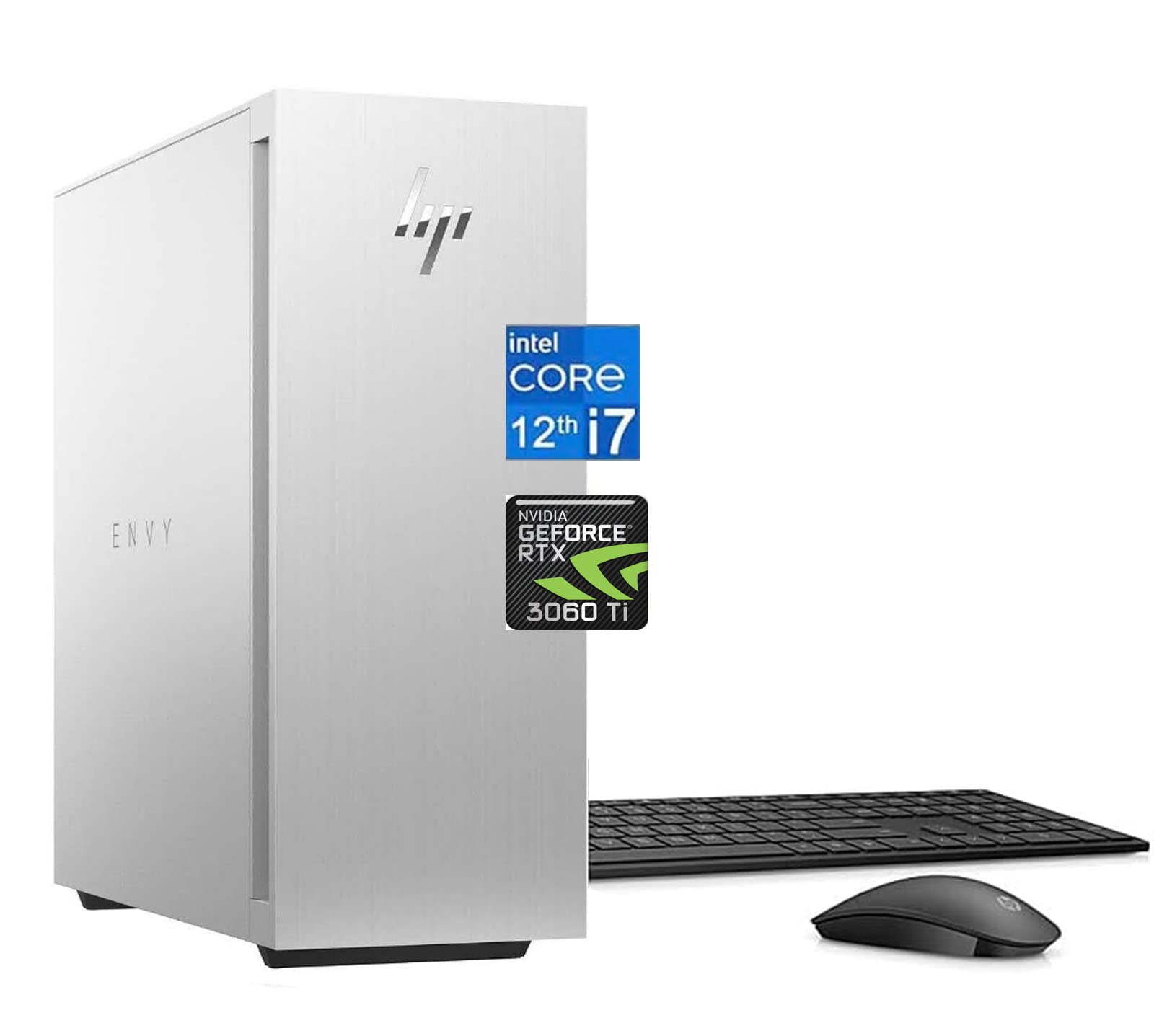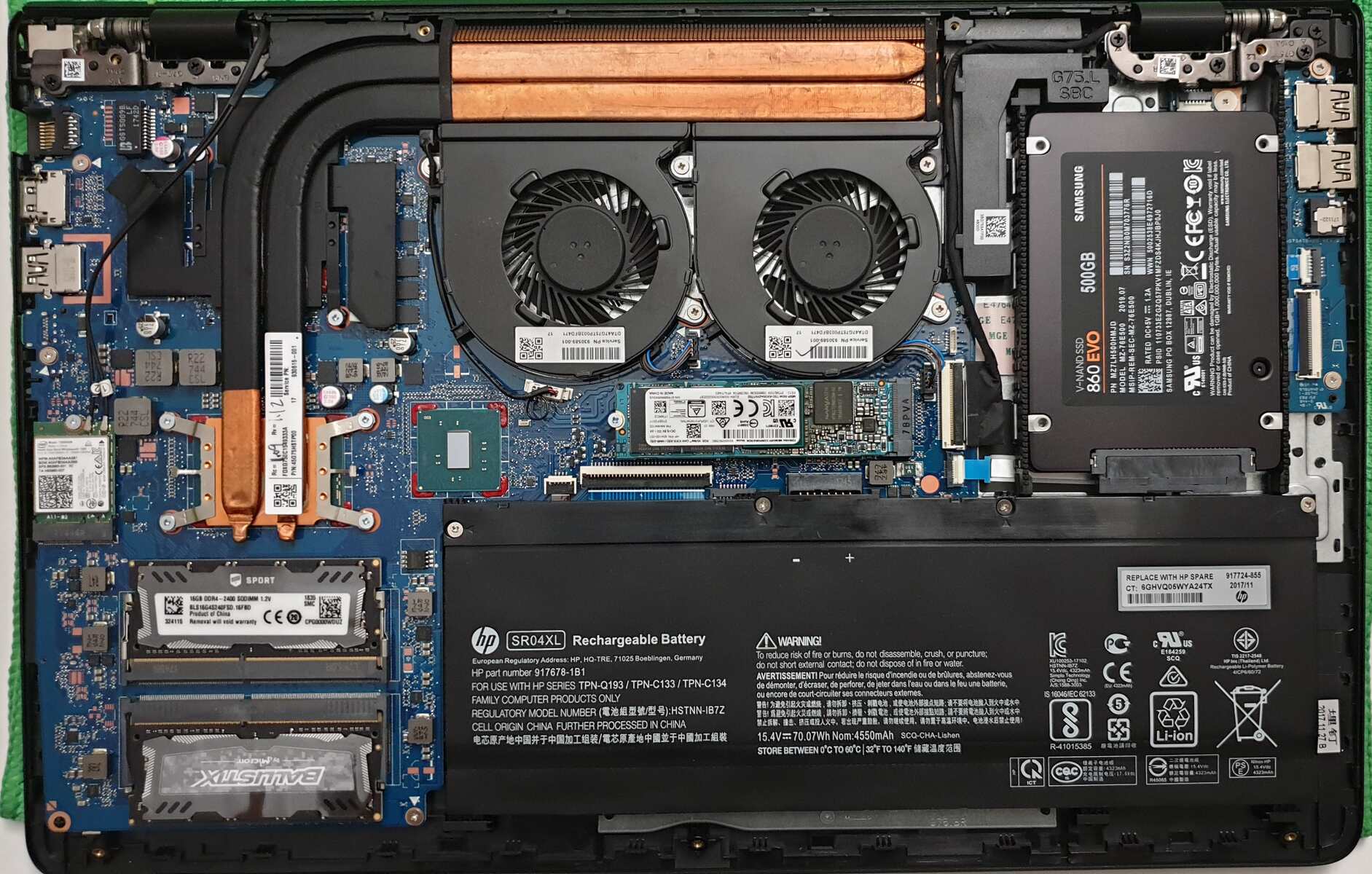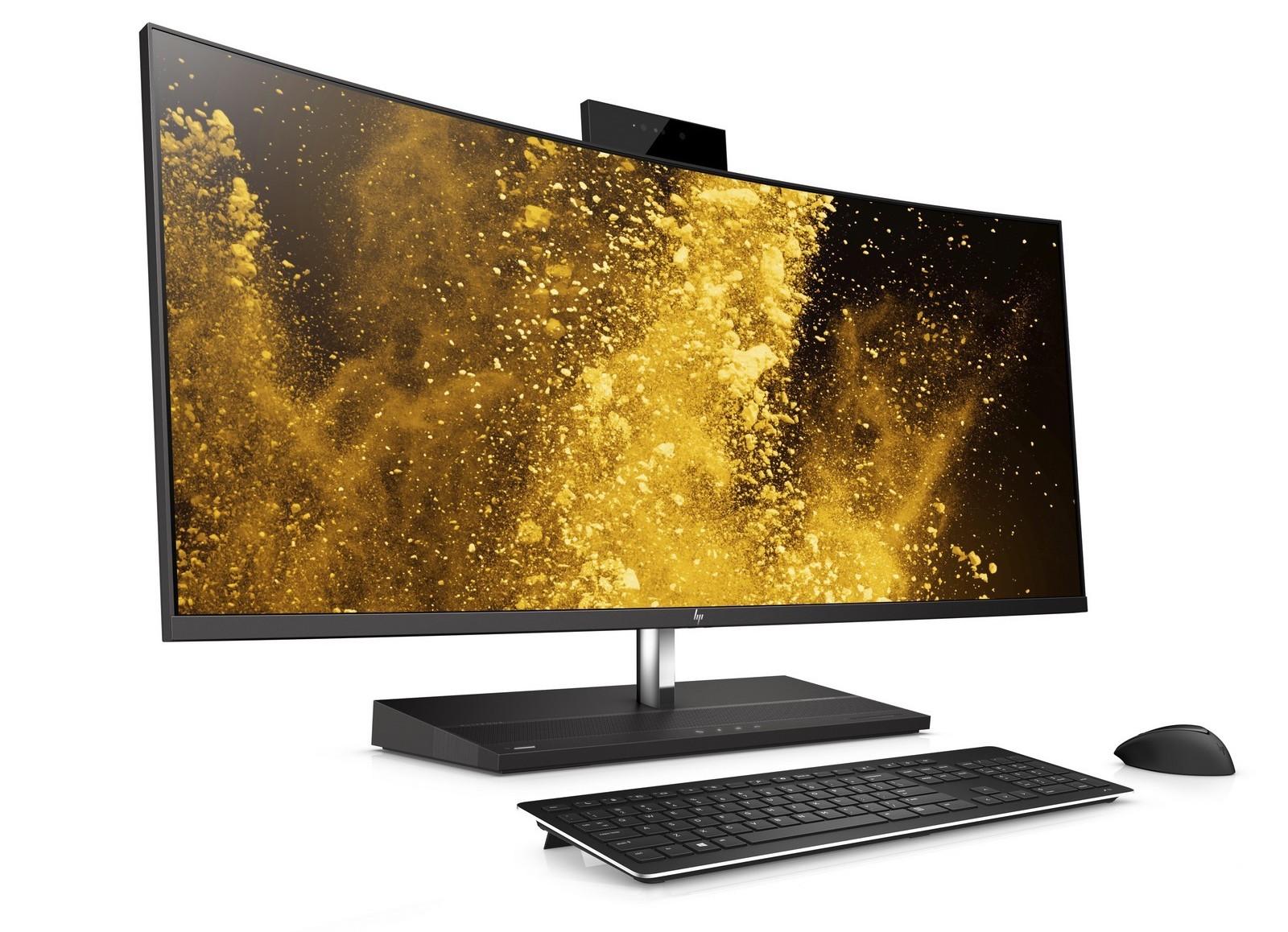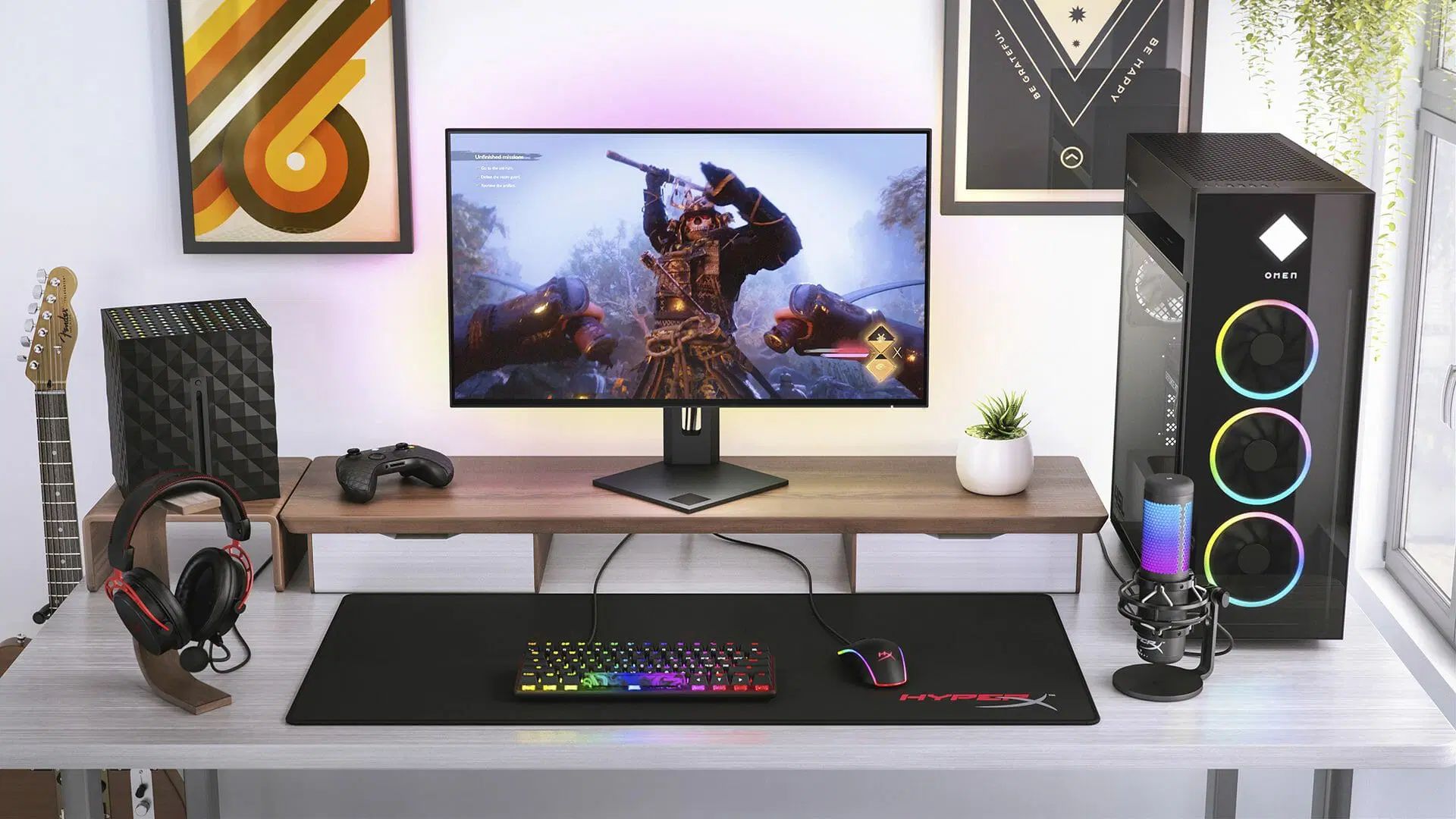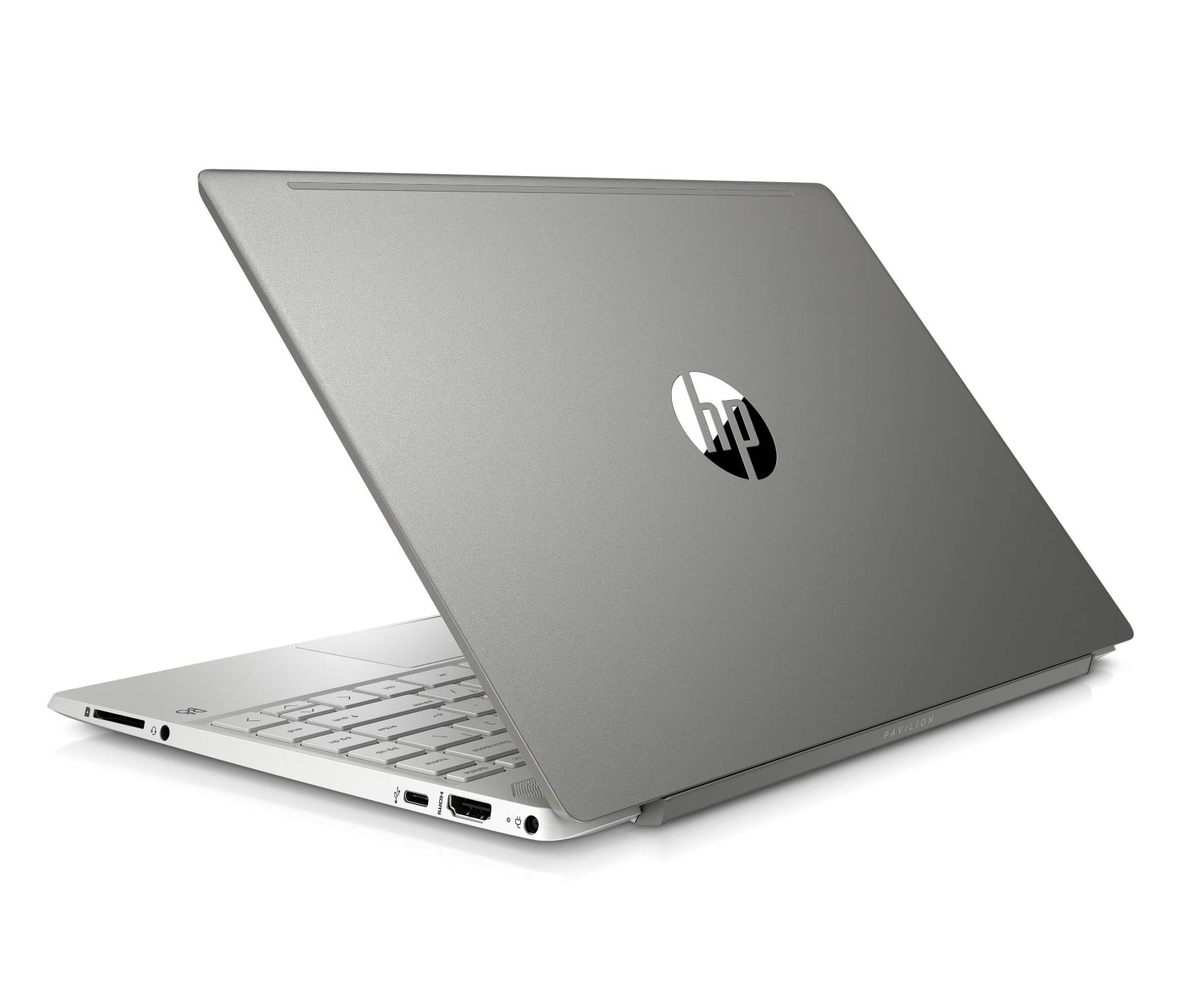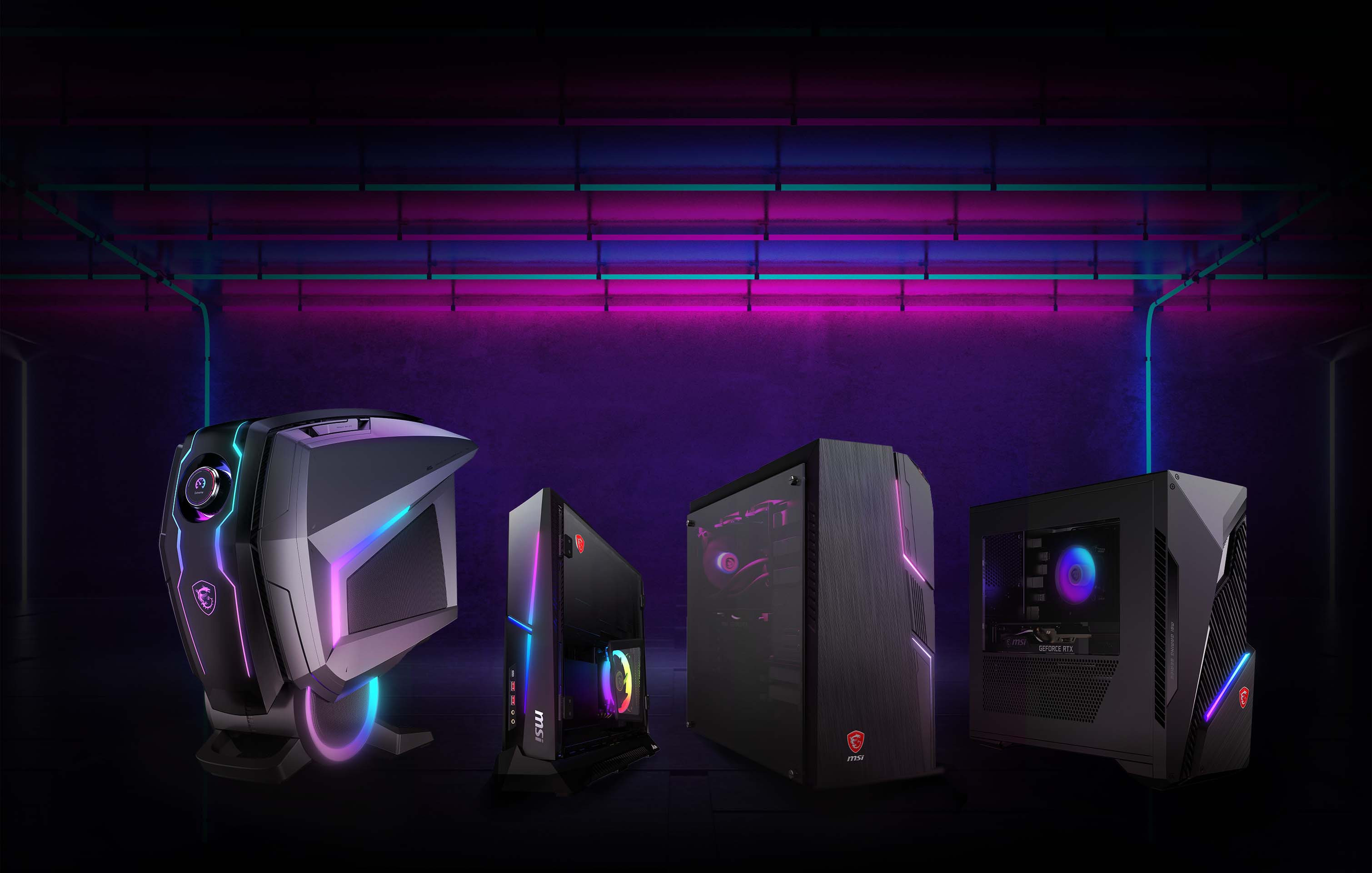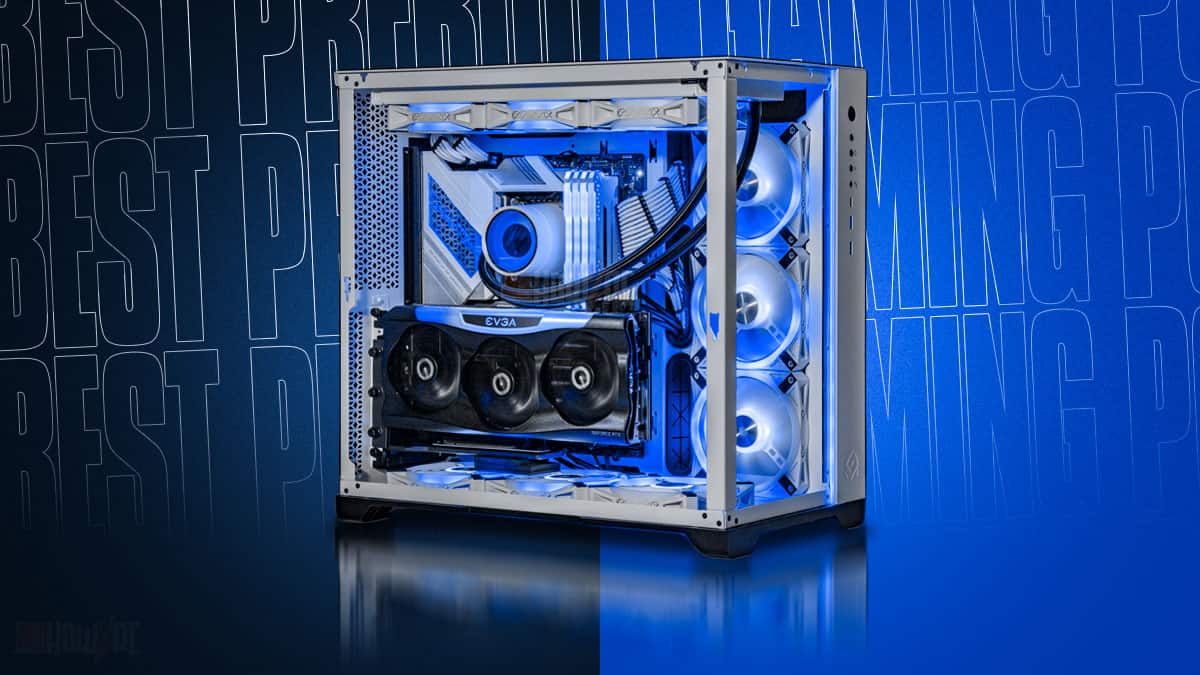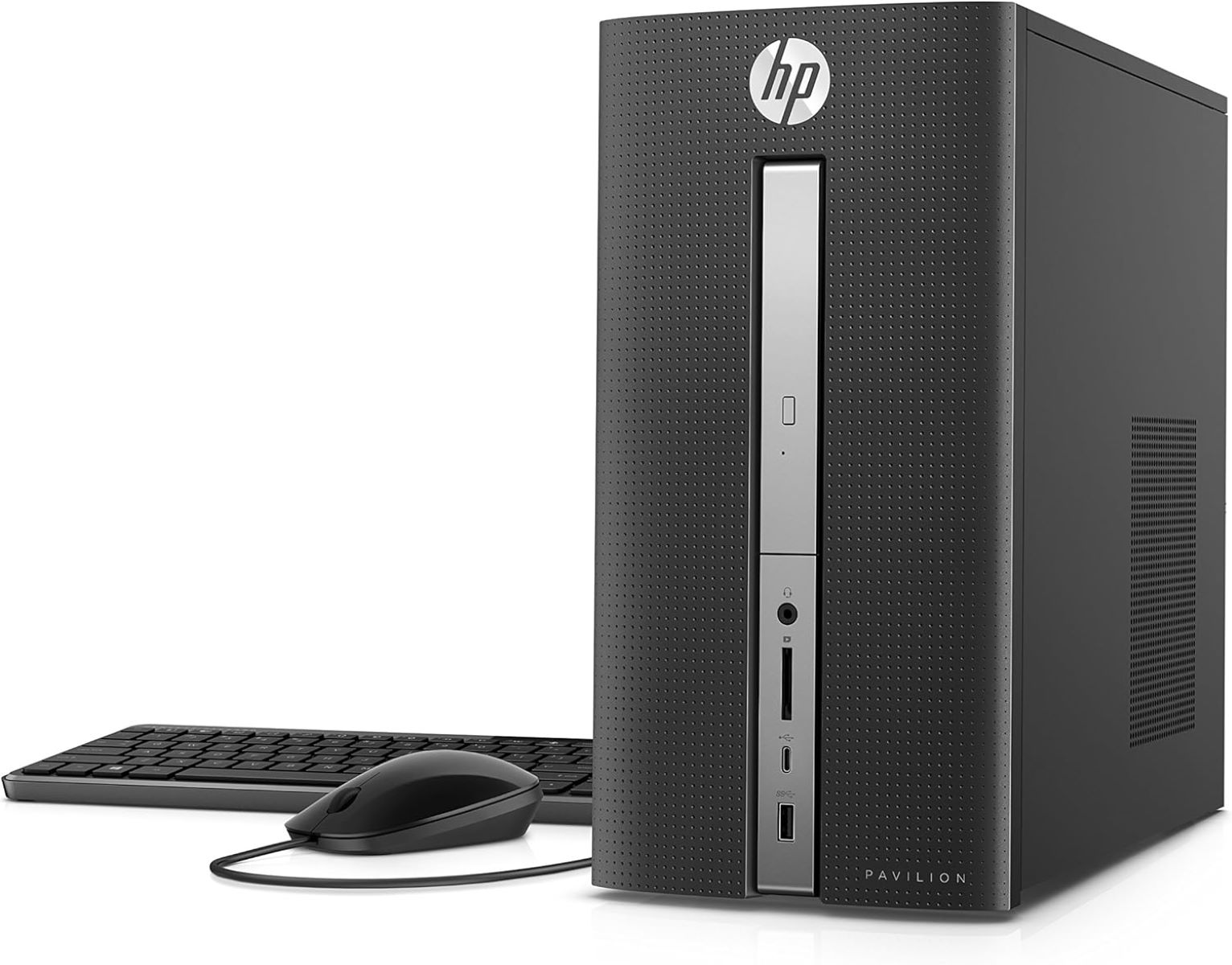Best RAM for HP Pavilion Gaming Desktop
Choosing the right RAM for your HP Pavilion Gaming Desktop is crucial in order to maximize its performance and unlock its full potential. Upgrading your RAM can significantly improve your desktop’s speed and responsiveness, allowing you to seamlessly handle resource-intensive tasks and run demanding games without any lag or slowdowns.
When selecting RAM for your HP Pavilion Gaming Desktop, there are a few key factors to consider. First and foremost is compatibility. Ensuring that the RAM modules you choose are compatible with your specific model is essential for proper installation and operation. Additionally, you’ll need to consider the speed and capacity of the RAM.
As for speed, the general recommendation for HP Pavilion Gaming Desktops is to go for DDR4 RAM with speeds ranging from 2400MHz to 3200MHz. This will provide a good balance between performance and cost-effectiveness. Higher speeds may offer a slight performance boost, but the increase in price may not be worth it for most users.
When it comes to capacity, the minimum recommended RAM for gaming is 8GB. However, if you plan on running resource-intensive applications or multitasking while gaming, it’s recommended to go for at least 16GB of RAM. This will ensure smooth gameplay and allow you to handle any demanding tasks with ease.
Now, let’s explore some of the best RAM options for your HP Pavilion Gaming Desktop:
- Corsair Vengeance LPX – This DDR4 RAM offers high-speed performance and is available in various capacities ranging from 8GB to 32GB. It’s compatible with most HP Pavilion Gaming Desktop models and is known for its reliability and overclocking capabilities.
- Crucial Ballistix Sport LT – With speeds up to 3200MHz, this DDR4 RAM is perfect for gamers looking to enhance their desktop’s performance. It’s available in capacities of 8GB, 16GB, and 32GB, providing ample space for multitasking and resource-intensive tasks.
- G.Skill Ripjaws V Series – Offering excellent performance and overclocking potential, this DDR4 RAM is a popular choice among gamers. It comes in capacities ranging from 8GB to 64GB and features sleek and stylish heatspreaders for improved heat dissipation.
- Kingston HyperX Fury – Known for its reliability and compatibility, this DDR4 RAM is an affordable option for those on a budget. It’s available in capacities of 8GB to 64GB and offers speeds up to 3200MHz, ensuring smooth performance even during intensive gaming sessions.
When selecting RAM for your HP Pavilion Gaming Desktop, it’s important to ensure compatibility with your specific model. Additionally, consider the speed and capacity that will best suit your gaming and computing needs. With the right RAM, you can enhance the performance of your desktop and enjoy a seamless gaming experience.
Factors to Consider when Choosing RAM for HP Pavilion Gaming Desktop
When choosing the right RAM for your HP Pavilion Gaming Desktop, there are several factors that you should take into consideration. It’s important to understand these factors in order to make an informed decision and ensure that the RAM you choose is compatible and optimized for your specific desktop model. Here are the key factors to consider:
1. Compatibility: The first and most crucial factor to consider is compatibility. Not all RAM modules are compatible with every HP Pavilion Gaming Desktop model. Each desktop has its own specific requirements and limitations for RAM. To determine the compatibility, check the motherboard specifications or consult the manufacturer’s website for a list of compatible RAM modules.
2. RAM Type: There are different types of RAM available, such as DDR3 and DDR4. It’s important to check which type of RAM is compatible with your HP Pavilion Gaming Desktop. DDR4 RAM is the latest and fastest type currently available and is recommended for better performance.
3. RAM Speed: The speed of RAM is measured in megahertz (MHz) and indicates how quickly the RAM can process data. For optimal performance on your HP Pavilion Gaming Desktop, consider RAM modules with higher speeds. However, keep in mind that the motherboard may have limitations on the maximum supported speed, so choose RAM modules that are within the supported range.
4. RAM Capacity: The capacity of RAM determines how much data the RAM can store and access at a given time. For gaming and other resource-intensive tasks, it’s recommended to have at least 8GB of RAM. However, if you plan on running multiple applications simultaneously or engaging in heavy multitasking, consider opting for 16GB or even 32GB to ensure smooth performance.
5. Cost: Cost is often a significant factor when choosing RAM. Set a budget and consider which RAM modules offer the best value for money based on their compatibility, speed, and capacity. However, be cautious of extremely low-priced RAM modules, as they may compromise on quality and performance.
6. Brand and Quality: Finally, consider the reputation and quality of the RAM manufacturer. Choose reputable brands known for producing reliable and high-quality RAM modules. These brands often provide better warranty and after-sales support, ensuring a positive user experience.
By considering these factors, you can select the most suitable RAM for your HP Pavilion Gaming Desktop. Remember to check compatibility, choose the right RAM type and speed, prioritize capacity based on your usage needs, and consider the cost and brand reputation. With the right RAM, you can enhance the performance and overall experience of your gaming desktop.
RAM Speed and Capacity Recommendations for HP Pavilion Gaming Desktop
When it comes to RAM for your HP Pavilion Gaming Desktop, both speed and capacity are important considerations. The right combination of speed and capacity can greatly enhance your desktop’s performance and ensure smooth multitasking, gaming, and overall system responsiveness. Here are some recommendations for RAM speed and capacity for HP Pavilion Gaming Desktops:
RAM Speed:
The speed of RAM is measured in megahertz (MHz). Higher RAM speeds allow for faster data transfer and processing, resulting in improved overall performance. For most HP Pavilion Gaming Desktops, the recommended RAM speed is DDR4 with speeds ranging from 2400MHz to 3200MHz. This range strikes a good balance between performance and affordability. However, it’s worth noting that the maximum supported RAM speed may vary depending on the specific model and motherboard limitations. Be sure to check the specifications of your desktop to ensure compatibility.
While higher RAM speeds can provide some performance benefits, the actual impact on gaming and everyday tasks may be marginal. Investing in RAM with extremely high speeds, such as 4000MHz or above, may not offer significant advantages for most users and may not be worth the extra cost. It’s important to consider your specific needs and budget when selecting RAM speed.
RAM Capacity:
The capacity of RAM determines how much data your computer can store and access quickly. For gaming and everyday tasks, it’s generally recommended to have a minimum of 8GB of RAM. This capacity allows for smooth gameplay and multitasking. However, if you frequently run resource-intensive applications or engage in heavy multitasking, consider opting for 16GB or even 32GB of RAM. This increased capacity will provide more headroom for data storage and allow for smoother performance when handling demanding tasks.
Keep in mind that the RAM capacity of your HP Pavilion Gaming Desktop may depend on the number of RAM slots available on the motherboard. Some desktops may have two or four slots, allowing you to easily upgrade and add more RAM modules in the future. Be sure to check the motherboard specifications to determine the maximum supported RAM capacity and slot configuration.
Matching RAM Speed and Capacity:
When selecting RAM for your HP Pavilion Gaming Desktop, it’s important to ensure that the speed and capacity are compatible. For optimal performance, aim for a balance between the two. Having high-speed RAM without sufficient capacity may limit the system’s ability to store and access data quickly. Likewise, having a large amount of RAM with low speeds may result in slower data processing.
For most users, a recommended configuration would be at least 16GB of DDR4 RAM with speeds ranging from 2400MHz to 3200MHz. This configuration provides a good balance between capacity and speed, allowing for smooth gaming and multitasking performance without breaking the bank.
By considering the recommended RAM speed and capacity for your HP Pavilion Gaming Desktop, you can optimize your desktop’s performance and ensure a seamless computing experience. Remember to check the model’s specifications and your usage needs to choose the most suitable RAM configuration.
How to Check the Current RAM Configuration on HP Pavilion Gaming Desktop
Before upgrading or replacing RAM modules on your HP Pavilion Gaming Desktop, it’s important to know the current RAM configuration. Checking the existing RAM configuration allows you to understand the type, capacity, and speed of the installed modules and make informed decisions when selecting new RAM. Here’s a step-by-step guide on how to check the current RAM configuration on your HP Pavilion Gaming Desktop:
- Open the Task Manager: On your desktop, right-click the taskbar at the bottom of the screen and select “Task Manager” from the context menu. Alternatively, you can press the “Ctrl + Shift + Esc” key combination.
- Go to the Performance Tab: In the Task Manager window, click on the “Performance” tab at the top.
- Select Memory: In the left-hand menu, click on “Memory” to display the memory-related information.
- View Installed RAM: Under the “Memory” section, you will find the details of the installed RAM modules, including the total capacity and speed. The “Slots used” will indicate how many RAM slots on the motherboard have been occupied.
- Access Detailed Information: To access more detailed information about the RAM, click on the “Open Resource Monitor” link at the bottom of the Task Manager window. In the Resource Monitor, under the “Memory” tab, you can find additional details like the manufacturer, part number, and form factor of the installed RAM modules.
Alternatively, you can also check the RAM configuration through the BIOS settings of your HP Pavilion Gaming Desktop. Here’s how:
- Restart Your Computer: To access the BIOS settings, you’ll need to restart your computer.
- Enter BIOS: As the computer boots up, you’ll see an initial screen. Look for a message that instructs you to press a specific key, such as F2 or Delete, to enter the BIOS settings. Press the corresponding key quickly to access the BIOS.
- Navigate to the Memory Configuration: Once in the BIOS settings, use the arrow keys to navigate through the menus. Look for a section related to memory or RAM configuration.
- View the RAM Configuration: In the memory or RAM configuration section, you will find the details of the installed RAM, including the type, capacity, and speed. It may also display the number of occupied RAM slots.
- Exit BIOS: When you’re done viewing the RAM configuration, use the provided instructions to exit the BIOS settings.
By following these steps, you can easily check the current RAM configuration on your HP Pavilion Gaming Desktop. This information will be helpful when upgrading or troubleshooting RAM-related issues, ensuring compatibility and optimized performance with the new RAM modules you select.
Installing RAM in HP Pavilion Gaming Desktop: Step-by-Step Guide
Installing additional RAM in your HP Pavilion Gaming Desktop is a relatively straightforward process that can greatly enhance your desktop’s performance. With a few simple steps, you can upgrade your RAM and enjoy improved multitasking capabilities and smoother gaming experiences. Here’s a step-by-step guide to installing RAM in your HP Pavilion Gaming Desktop:
- Prepare Your Workspace: Start by finding a clean, well-lit workspace with ample room to handle your desktop tower and the necessary tools. Make sure to ground yourself by touching a grounded metal object to prevent any static electricity discharge that could potentially damage the components of your desktop.
- Gather the Required Tools and Components: To install RAM, you’ll need the following tools and components: the new RAM modules that are compatible with your HP Pavilion Gaming Desktop, a screwdriver (if required to remove the case panel), and an antistatic wristband (optional but recommended).
- Power Off and Unplug Your Desktop: Shut down your desktop and unplug the power cable to ensure your safety and prevent any electrical damage to the components.
- Open the Case: Depending on the specific model of your HP Pavilion Gaming Desktop, you may need to remove the side panel of the case to access the internal components. Refer to the user manual or online resources for instructions on how to open the case panel properly.
- Find the RAM Slots: Locate the RAM slots on the motherboard. These slots are long and thin, usually lined up in a row. Depending on the motherboard configuration, there may be two or four RAM slots.
- Remove Existing RAM (If Applicable): If you’re replacing existing RAM modules, carefully press the small retaining clips or levers on the sides of the RAM slots to release the modules. Gently pull the module out from the slot at an angle.
- Install the New RAM Modules: Hold the new RAM module carefully by its edges, align the notch on the module with the notch on the RAM slot, and insert it into the slot at a slight angle. Apply gentle pressure evenly until the module clicks into place. The retaining clips or levers should automatically close and secure the RAM module.
- Secure the Case and Reconnect Cables: Once all the new RAM modules are installed, securely close the case panel and fasten any screws or clips to ensure it is properly sealed. Reconnect the power cable and any other peripherals that were disconnected earlier.
- Power On Your Desktop and Check RAM Configuration: Turn on your HP Pavilion Gaming Desktop and verify that the new RAM is recognized and functioning correctly. You can check the RAM configuration through the Task Manager as mentioned in the previous section.
- Perform a System Test: After installing the new RAM modules, it’s a good idea to run a system test to ensure stability and performance. You can use software like MemTest86 to check if the RAM is functioning properly and to identify any errors or issues.
By following this step-by-step guide, you can easily and safely install RAM in your HP Pavilion Gaming Desktop. Remember to handle the components with care, select compatible RAM modules, and take necessary precautions to prevent any damage from static electricity. With the upgraded RAM, you’ll experience improved performance and efficiency in your gaming and computing tasks.
Troubleshooting Common Issues with RAM Installation on HP Pavilion Gaming Desktop
While installing RAM in your HP Pavilion Gaming Desktop is generally a straightforward process, you may encounter some common issues. These issues can range from compatibility problems to physical installation errors. Understanding and troubleshooting these issues can help ensure a successful RAM installation. Here are some common issues and their possible solutions:
1. RAM Not Recognized: After installing the new RAM, your computer may not recognize it, or the total amount of RAM displayed may not match the installed capacity. This can be due to improper installation or compatibility issues.
Solution: Double-check that the RAM modules are properly seated in the slots and securely locked in place. Ensure that the modules are compatible with your HP Pavilion Gaming Desktop by referring to the manufacturer’s specifications or consulting with a technical expert. If the issue persists, try installing one RAM module at a time to isolate potential compatibility issues with specific modules.
2. System Instability or Frequent Crashes: After RAM installation, you may experience system instability, random crashes, or blue screen errors. These issues can indicate incompatible or faulty RAM.
Solution: Check that the RAM modules are properly installed and seated in the slots. If you recently added new RAM, try removing it and see if the system stability improves. If the issue is resolved, the new RAM may be faulty or incompatible with your desktop. In such cases, consider returning the RAM and selecting alternative modules from a reliable manufacturer that are compatible with your HP Pavilion Gaming Desktop.
3. Slow Performance or No Improvement: If you installed new RAM but notice no significant improvement in performance or a decrease in performance, there may be underlying issues affecting your system.
Solution: Ensure that the RAM modules are compatible with your desktop and that you have installed them in the correct slots as per the motherboard configuration. Verify that your operating system and drivers are up to date. Additionally, check for any background applications or processes that may be consuming system resources. If the issue persists, it may be worth seeking technical assistance to diagnose any underlying hardware or software issues that could be impacting performance.
4. Error Beeps or POST Failure: When you power on your computer, you may hear error beeps or experience a failure to boot properly (POST failure). These issues can occur due to faulty RAM installation or incompatible modules.
Solution: Check that the RAM modules are securely seated in the slots and properly locked in place. Ensure that the modules are compatible with your HP Pavilion Gaming Desktop model. If you are still encountering error beeps or POST failure, try removing and reinserting the RAM modules, ensuring they are properly aligned. If the issue persists, consult the motherboard manual or contact the manufacturer for specific troubleshooting steps.
By troubleshooting these common issues, you can ensure a successful RAM installation in your HP Pavilion Gaming Desktop. It’s important to follow proper installation procedures, verify compatibility, and seek assistance if you encounter persistent issues. With the right RAM configuration and troubleshooting knowledge, you can enjoy improved performance and stability in your gaming and computing experiences.
Upgrading RAM on HP Pavilion Gaming Desktop: Benefits and Considerations
Upgrading the RAM on your HP Pavilion Gaming Desktop can offer a range of benefits that enhance your overall computing experience. By increasing the amount or improving the speed of your RAM, you can boost performance, handle resource-intensive tasks more efficiently, and unlock the full potential of your gaming desktop. Here are some benefits and considerations to keep in mind when upgrading the RAM on your HP Pavilion Gaming Desktop:
1. Improved Performance: One of the primary benefits of upgrading your RAM is improved performance. Adding more RAM or opting for higher-speed modules can significantly enhance your desktop’s multitasking capabilities. With increased RAM, your computer can handle multiple applications simultaneously, allowing for smoother multitasking, faster data access, and reduced lag or slowdowns.
2. Smooth Gaming Experience: RAM plays a crucial role in gaming performance. Upgrading your RAM can ensure a smoother and more immersive gaming experience. With additional RAM, your desktop can store more game data, resulting in faster loading times and reduced stutters or jitters during gameplay. It also allows your computer to handle more complex game environments and higher-resolution textures without sacrificing responsiveness.
3. Efficient Resource Management: RAM acts as a temporary storage space for data that your CPU needs to access quickly. By upgrading your RAM, you provide your CPU with ample space to store and access data, reducing the need for frequent data retrieval from slower storage devices like hard drives. This efficient resource management results in faster overall system performance and responsiveness.
4. Future-Proofing: As technology advances, software and games tend to become more demanding. Upgrading your RAM ensures that your HP Pavilion Gaming Desktop stays relevant and capable of handling the latest software updates and resource-intensive tasks. By future-proofing your system with higher-capacity or faster RAM modules, you can extend the lifespan and usability of your gaming desktop.
Considerations:
a. Compatibility: Ensure that the RAM modules you choose are compatible with your specific HP Pavilion Gaming Desktop model. Check the motherboard specifications or consult the manufacturer’s website for a list of compatible RAM modules.
b. Budget: Consider your budget when selecting the RAM upgrade. Prices can vary based on capacity, speed, and brand. Identify your needs and prioritize accordingly to find the best value for money.
c. RAM Configuration: Understanding your RAM configuration and the limits of your motherboard is important when upgrading. Check the maximum supported RAM capacity and the number of available RAM slots to determine how much and which type of RAM to purchase.
d. Gaming and Usage Needs: Analyze your gaming requirements and other resource-intensive tasks to determine the amount of RAM you need. Consider factors such as the complexity of the games or applications you use and the level of multitasking you typically engage in.
By considering these benefits and important considerations, you can make an informed decision about upgrading the RAM on your HP Pavilion Gaming Desktop. Upgrading can enhance performance, unlock the full potential of your gaming desktop, and ensure smooth multitasking capabilities. With the right RAM configuration, you can enjoy a seamless and immersive computing experience.
Frequently Asked Questions (FAQ) about RAM Compatibility with HP Pavilion Gaming Desktop
When it comes to upgrading or replacing RAM on your HP Pavilion Gaming Desktop, you may have several questions regarding compatibility, installation, and performance. To help you make informed decisions, here are some frequently asked questions about RAM compatibility with HP Pavilion Gaming Desktops:
Q1: What type of RAM is compatible with my HP Pavilion Gaming Desktop?
A1: The compatible RAM type for HP Pavilion Gaming Desktops is generally DDR4. However, it’s important to check the specific model and its corresponding motherboard specifications to ensure compatibility.
Q2: How much RAM can my HP Pavilion Gaming Desktop support?
A2: The maximum amount of RAM your HP Pavilion Gaming Desktop can support depends on the specific model and motherboard. Check the manufacturer’s website or user manual for the maximum supported RAM capacity and the number of available RAM slots.
Q3: Can I mix different RAM capacities or speeds?
A3: It is generally recommended to use RAM modules of the same capacity and speed to ensure optimal performance and compatibility. Mixing different capacities or speeds may work, but it can potentially result in reduced performance or system instability.
Q4: How do I find the compatible RAM modules for my HP Pavilion Gaming Desktop?
A4: You can find compatible RAM modules for your HP Pavilion Gaming Desktop by referring to the manufacturer’s website, consulting the user manual, or using online system compatibility tools provided by RAM manufacturers.
Q5: Can I install RAM with a higher speed than what my HP Pavilion Gaming Desktop supports?
A5: While it is possible to install RAM with a higher speed than what your desktop officially supports, the RAM will typically run at the maximum supported speed of your motherboard. Installing higher-speed RAM may not provide any noticeable performance benefits and can result in unnecessary additional costs.
Q6: Do I need to reinstall the operating system after upgrading the RAM?
A6: In most cases, upgrading the RAM does not require reinstalling the operating system. However, it’s always recommended to back up your data before making any hardware changes, and occasionally, a system reboot may be necessary to fully recognize and utilize the new RAM modules.
Q7: Can I upgrade the RAM myself, or do I need professional assistance?
A7: Upgrading the RAM in your HP Pavilion Gaming Desktop can typically be done by yourself. It is a relatively simple process that involves opening the case, removing and inserting RAM modules, and securing the case panel. However, if you are unsure, it’s always advisable to consult a professional or refer to the user manual for your specific model.
Q8: Will upgrading the RAM void my warranty?
A8: Generally, installing compatible RAM modules should not void your warranty. However, it’s always recommended to check the warranty terms and conditions provided by the manufacturer to ensure that adding or replacing RAM does not violate any warranty agreements.
These FAQs aim to address some common concerns about RAM compatibility with HP Pavilion Gaming Desktops. If you have further questions or need more specific information, it’s always best to consult the manufacturer’s resources or seek assistance from a technical expert to ensure a successful RAM upgrade.







